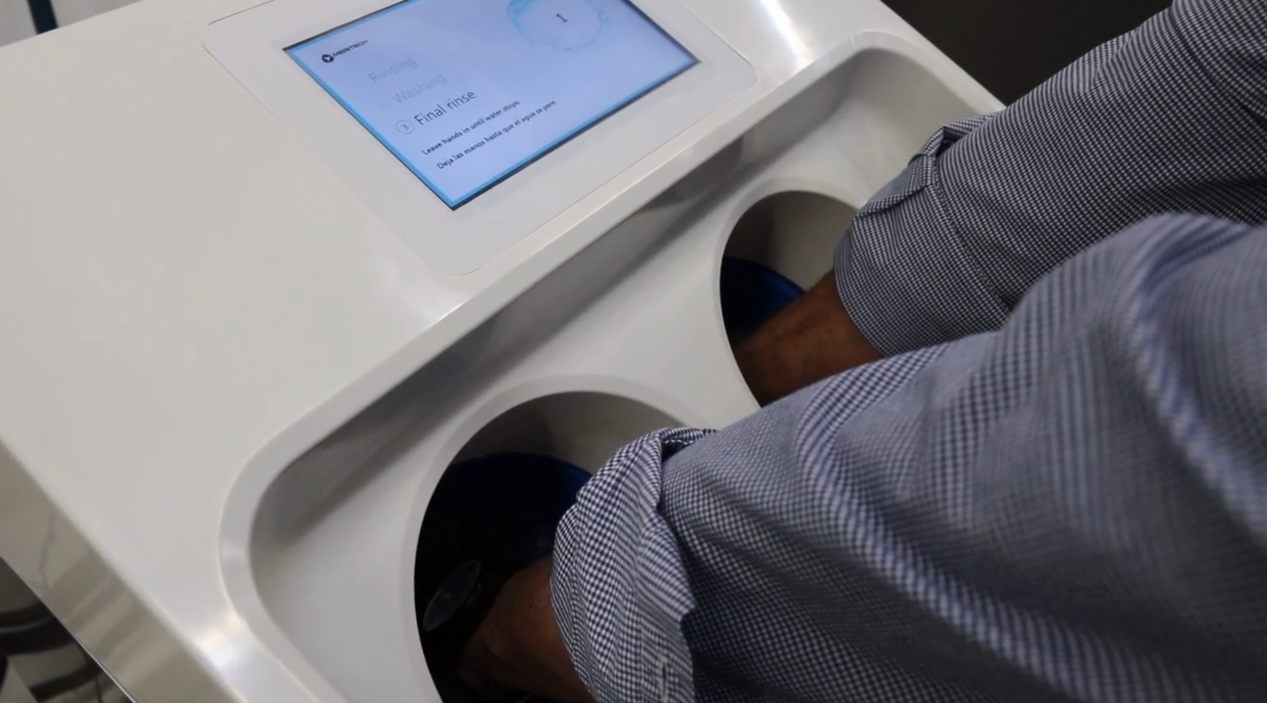5 Strategies for Improving Hand Hygiene Compliance for Food Processing
Hand hygiene is of paramount importance in the food processing industry. Ensuring proper hand hygiene practices among employees is crucial for preventing the spread of foodborne illnesses and maintaining high-quality standards. However, achieving consistent hand hygiene compliance can be a challenge. To help overcome this hurdle, we present five effective strategies for improving hand hygiene compliance in food processing facilities.
Education and Training Programs to Improve Hand Hygiene Compliance
One effective way to ensure consistent hand hygiene compliance among employees in food processing facilities is to implement comprehensive education and training programs. These programs should include regular training sessions that not only educate employees about the importance of hand hygiene but also highlight the proper handwashing techniques and the potential risks associated with inadequate hand hygiene. Reinforcing the message through visual aids, posters, and reminders in restrooms and work areas can further enhance employee awareness and understanding of the importance of hand hygiene.
 The training sessions should cover the proper use of soap, warm water, and single-use towels. Employees should also be educated on the importance of washing their hands before and after handling food, using the restroom, sneezing, coughing, or touching their face. Ensure that the training sessions are interactive and engaging, allowing employees to ask questions and participate in discussions.
The training sessions should cover the proper use of soap, warm water, and single-use towels. Employees should also be educated on the importance of washing their hands before and after handling food, using the restroom, sneezing, coughing, or touching their face. Ensure that the training sessions are interactive and engaging, allowing employees to ask questions and participate in discussions.
Download engaging training materials in our Food Safety Toolbox
To make the training sessions more effective, use real-life scenarios that are relevant to your specific food processing facility. For example, if the facility processes raw meat, the training program should include information on how to properly handle and wash hands when dealing with raw meat. This approach will help employees understand the importance of hand hygiene in their day-to-day activities and encourage them to prioritize hand hygiene.
Accessible Handwashing Facilities to Improve Hand Hygiene Compliance
When it comes to placing handwashing stations in food processing facilities, it's not just about putting them in high-traffic areas. It's important to strategically plan their placement to ensure that they don't disrupt the flow of production. For instance, if there are multiple production lines, it's best to put the stations in a central location that's easily accessible to all employees. By doing so, you can ensure that everyone can maintain the highest level of hand hygiene without interrupting the production process.
Find out more about our Hygiene Zone Design consultatons
Regular maintenance and cleaning of handwashing stations are essential to ensure that they remain fully functional and hygienic. It is important to establish a routine schedule for cleaning and maintenance to prevent the build-up of harmful bacteria and ensure that the stations are always ready for use. Assigning a designated employee or team to monitor and maintain the stations can help prevent the spread of harmful bacteria and ensure that the stations remain fully stocked with supplies.
Using Automated Hygiene to Improve Hand Hygiene Compliance
CleanTech® Automated Handwashing Stations are a game-changer in the food processing industry. By utilizing these stations, you not only improve hand hygiene compliance but also promote a culture of hygiene and safety in your facility. The stations have been designed to provide a complete handwashing experience, ensuring that employees wash their hands for the recommended duration and with the appropriate amount of hygiene solution and water. This consistent and effective solution helps reduce the spread of foodborne illnesses and maintain high-quality standards.

The touchless technology used in CleanTech® Automated Handwashing Stations is particularly beneficial, as it significantly reduces the risk of cross-contamination. Employees do not need to touch potentially contaminated surfaces, such as taps or soap dispensers, which can harbor harmful bacteria. This touchless approach ensures that employees can maintain hygiene without the added risk of exposure to harmful pathogens.
Moreover, the stations provide real-time feedback on hand hygiene compliance, allowing supervisors to monitor and track employee compliance levels. This feature enables managers to identify areas that require improvement and provide targeted feedback to employees. The feedback system can also be used to recognize individuals or teams that consistently maintain high compliance levels, fostering a positive and competitive environment that encourages employees to prioritize hand hygiene.
Improving Hnd Hygiene Compliance through Monitoring and Feedback
To monitor and maintain hand hygiene compliance in food processing facilities, it is essential to establish a robust system that regularly checks for adherence to hand hygiene protocols. This system can use various methods, such as direct observation, audits, or electronic monitoring systems, depending on the facility's size and complexity.
Direct observation involves supervisors or quality control personnel monitoring employees' hand hygiene practices and providing feedback and coaching when necessary. Audits involve a more structured approach, where a team of auditors conducts a systematic review of hand hygiene practices, identifying areas of improvement and providing recommendations. Electronic monitoring systems use sensors or cameras to track employees' hand hygiene practices, providing real-time feedback and alerts to supervisors or managers when compliance levels fall below the set standards.
Learn how to use CleanTech® as a hand hygiene monitoring system
Regardless of the method used, the system should provide regular feedback to employees on their hand hygiene performance, highlighting areas for improvement and acknowledging commendable practices. Recognizing individuals or teams that consistently maintain high compliance levels can foster a positive and competitive environment, encouraging employees to prioritize hand hygiene.
Leadership Commitment and Engagement to Improve Hand Hygiene Compliance
Leadership commitment and engagement are vital in ensuring that hand hygiene compliance is consistently maintained in food processing facilities. As a leader, it is essential to lead by example by consistently practicing good hand hygiene and encouraging others to do the same. By doing so, you demonstrate the importance of hand hygiene and encourage a culture of hygiene and safety within the workplace.
 Engaging with employees is also crucial in driving hand hygiene compliance. It is essential to listen to their concerns and address any obstacles they may face in complying with hand hygiene protocols. This approach fosters a sense of ownership and responsibility among employees, leading to greater compliance levels. Empowering supervisors and managers to enforce hand hygiene standards is also essential. They should be given the tools and resources needed to monitor compliance levels and provide regular feedback to employees. Prioritizing employee health and safety fosters a culture of hygiene, encouraging hand hygiene among employees.
Engaging with employees is also crucial in driving hand hygiene compliance. It is essential to listen to their concerns and address any obstacles they may face in complying with hand hygiene protocols. This approach fosters a sense of ownership and responsibility among employees, leading to greater compliance levels. Empowering supervisors and managers to enforce hand hygiene standards is also essential. They should be given the tools and resources needed to monitor compliance levels and provide regular feedback to employees. Prioritizing employee health and safety fosters a culture of hygiene, encouraging hand hygiene among employees.
Improving hand hygiene compliance in food processing facilities requires a multifaceted approach. By implementing these five strategies - education and training programs, accessible handwashing facilities, use of automated hygiene, monitoring and feedback, and leadership commitment - you can significantly enhance hand hygiene practices among employees. Remember, a strong hand hygiene culture not only safeguards the reputation of your food processing facility but also ensures the health and well-being of both your workforce and consumers.






